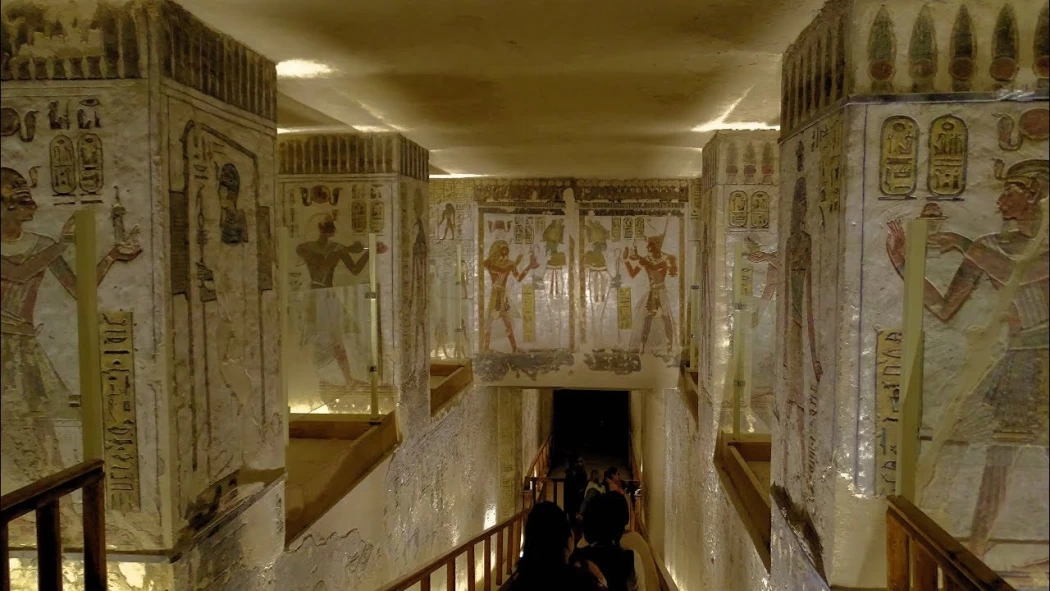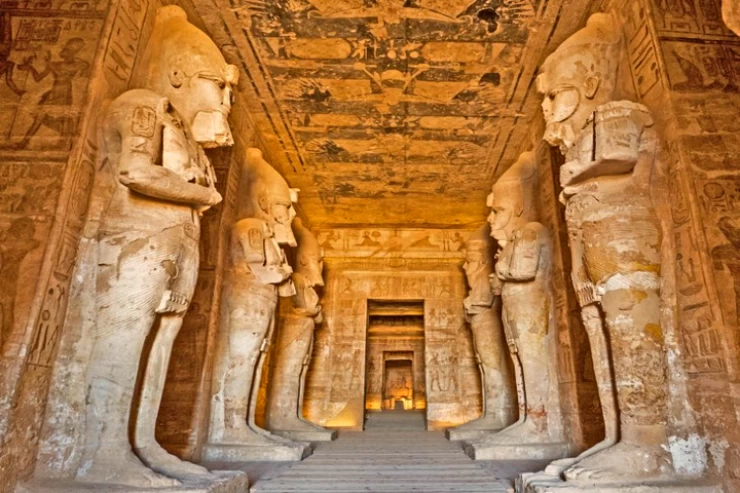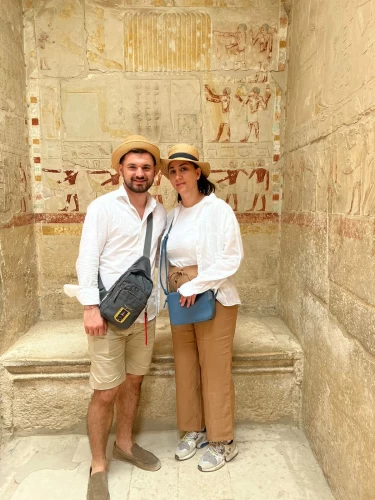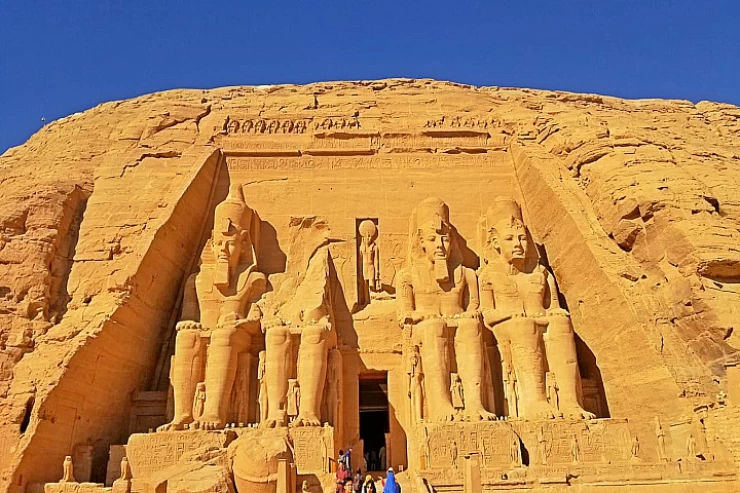
Tomb of Ramses II
The tomb of Ramses II Is known globally as KV7. It is the last resting place of the ancient Egyptian pharaoh Ramses II, known as Ramses the Great, the third king of the nineteenth dynasty. This tomb is located in the Valley of the Kings. 8, It is believed that the cemetery site was severely damaged as a result of the annual Nile floods
The design of the arched axis in the construction of this tomb followed the pattern used in the construction of the tombs of the early kings of the eighteenth dynasty. The burial chamber suffered from a landslide in the middle, gaps were found in the ceiling, and most of the tomb’s decorations were destroyed in a way that is difficult to restore, but the rest indicate that The motifs are inspired by the Book of Gates, the Book of the Hereafter, the Prayer of Ra, and the Opening of the Mouth ritual. The mummy was temporarily moved to the Deir el-Bahari cache, and the tomb was reused during the Third Decay and the Roman Era for burial and as a tourist attraction.
About the life of Ramses II :
At the age of fourteen, Ramses was appointed crown prince by his father, Seti I. He is believed to have sat on the throne in his late teens and is known to have ruled Egypt from 1291 BC to 1213 BC, for a period of 78 years and two months, according to both Manetho and contemporary historical records of Egypt. He was said to have lived 99 years, but it is likely that he died at the age of 90 or 91. If he had become a pharaoh in 1279 BC, as most Egyptologists believe today, he would have taken the throne at the age of 31 1279 BC, based on the date of his ascension to the throne In the third harvest season on the 27th.
Ramses II celebrated fourteen “Sad” feasts (first celebrated after thirty years of the pharaoh’s rule, and then every three years) during his reign, thus surpassing any other pharaoh.
At his death, he was buried in a tomb in the Valley of the Kings; His body was later transferred to the royal cache, discovered in 1881, and is now on display in the National Museum of Egyptian Civilization. The first period of his reign focused on the construction of cities, temples, and monuments.
He established the city of B-Ramses in the Nile Delta as his new capital and the main base for his campaigns in Syria. This city was built on the ruins of the city of Avaris, the capital of the Hyksos when he took power, and was the site of the main temple for a group.
During his reign, Ramses built a large number of buildings more than any other Egyptian king.
He began by completing the temple that his father had started in Abydos, then built a small temple of his own next to his father's temple, but it was destroyed and only ruins remain. In Karnak, he completed the construction of the temple that he had begun.
His grandfather, Ramses I, lived in Thebes of the Ramesseum (the nineteenth-century scholars called this funerary temple the name Ramesses II), a huge funerary temple built by Ramses for Amun and himself, and has a huge head taken from this temple and transferred to the British Museum. Ramses also built a wonderful masterpiece, the temples of Abu Simbel, the great temple of him carved in the rock.
The entrance to the temple is guarded by four huge statues of Ramses II while he is seated, and the height of each statue is more than 20 meters. With a cow's head, and there are 6 huge statues standing in the front of the temple, 4 of them are of Ramses II and 2 of Queen Nefertari, and the height of the statue reaches about 10 meters. ) Because all the great monuments and temples that he left behind were in southern Egypt, where the capital is as good as it is.
The monuments of Nubia were threatened by drowning under the waters of Lake Nasser, but they were saved with the help of UNESCO, and the rescue operation of the Abu Simbel temple was the largest and most complex of its kind.
At a distance of one hundred and eighty meters, Ramses II built many obelisks, including one that still exists in Luxor Temple, and another obelisk that is currently in France in the Place de la Concorde in Paris, which was moved by a French engineer named Lebas.
Ramses also made the first peace treaty in the world with Khatushili III, king of the Hittites.
Ramses assumed power after the death of his father, Seti I after he had chosen him as crown prince and involved him in managing the state. The age of Ramses is not known when his father died, but it is likely that he was less than 25 years old.
Ramses did not begin his reign by revoking the friendship treaty that his father had concluded with the Hittites, but rather directed his attention to the consolidation of his rule, so he ordered the end of all the unfinished works that his father had started as the temple of Abydos.
He then thought about exploiting the desert mines, following his father's policy. In about the fourth year of his reign, he went on a campaign to the outskirts of Asia to consolidate Egyptian influence and reassure the ports and communications. After that, during his fifth year of rule, he returned there, mobilizing his armies to clash with the Hittites, and that was in the Battle of Kadesh.
He stated that during the reign of Ramses II, the number of members of the Egyptian army reached about 100,000 men; It was a formidable force that he used to enhance Egyptian influence.
With the exception of Nefertari, the wives, sons, and daughters of this feat have primarily lived in darkness, yet he officially shared life with no less than ten women other than Nefertari, and Ramses personally admitted that he had fathered 100 sons.
You can visit the tomb of King Ramses II and learn about the most important historical events related to his grave through Luxor day tours
You can do different rounds through Egypt travel packages.
You can also enjoy the civilization and the beauty of history from the heart of the Nile through Egypt Nile river cruise tours.

















